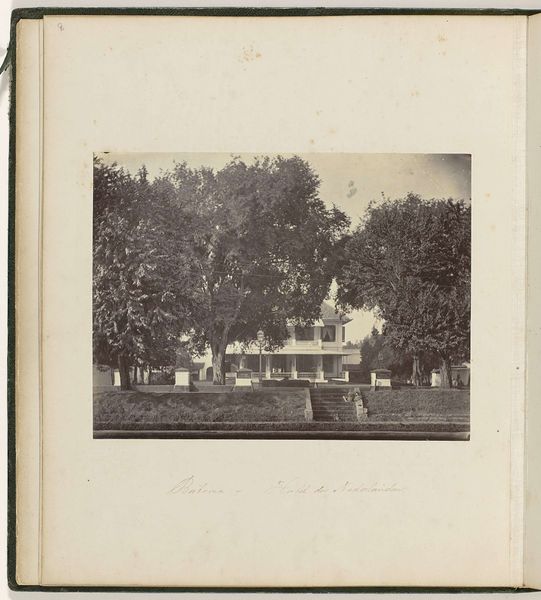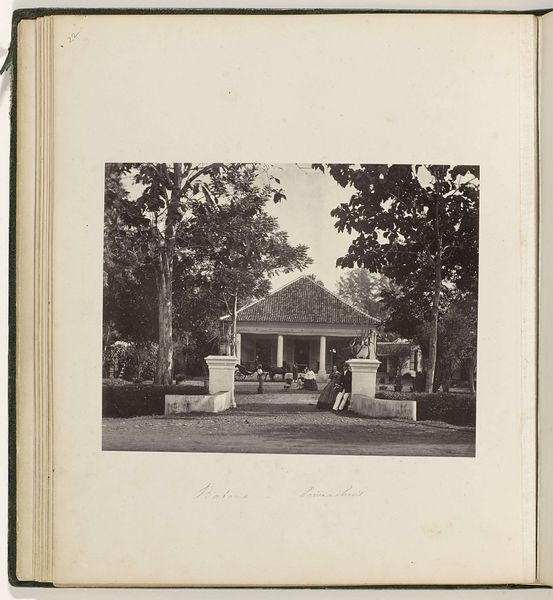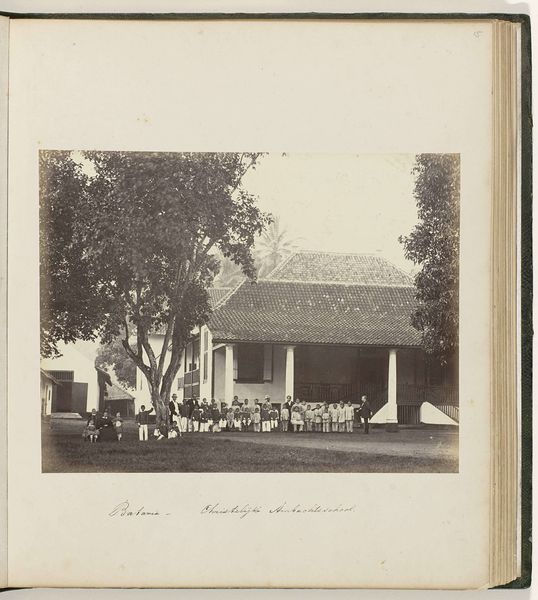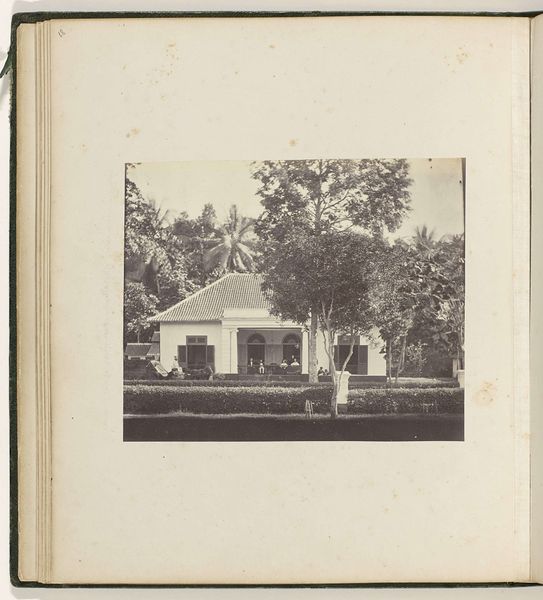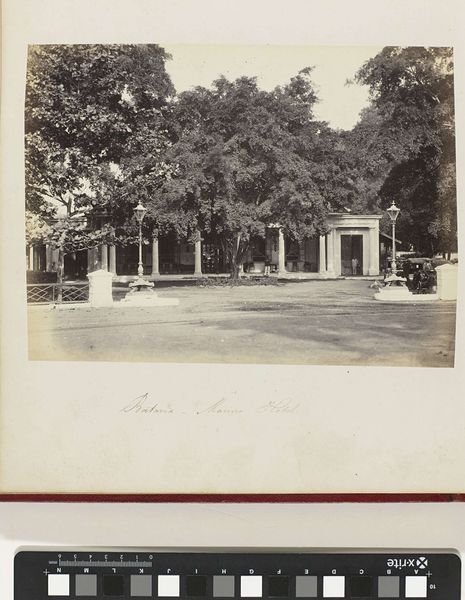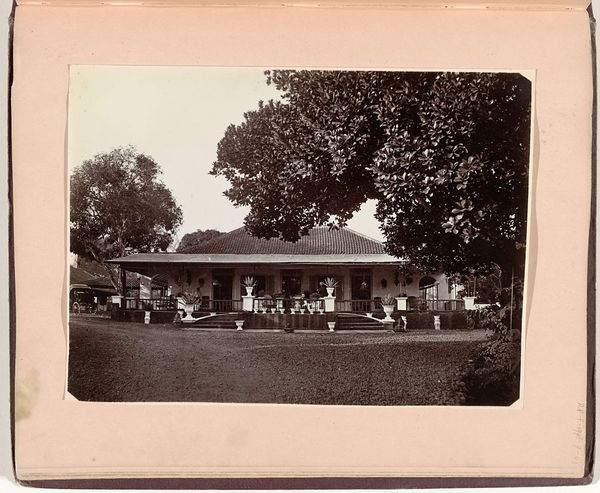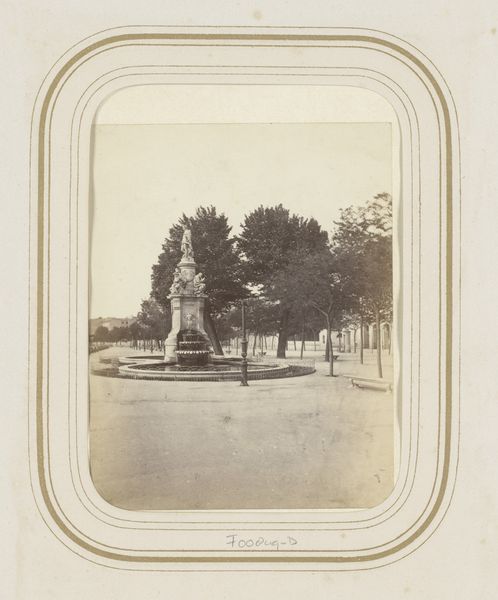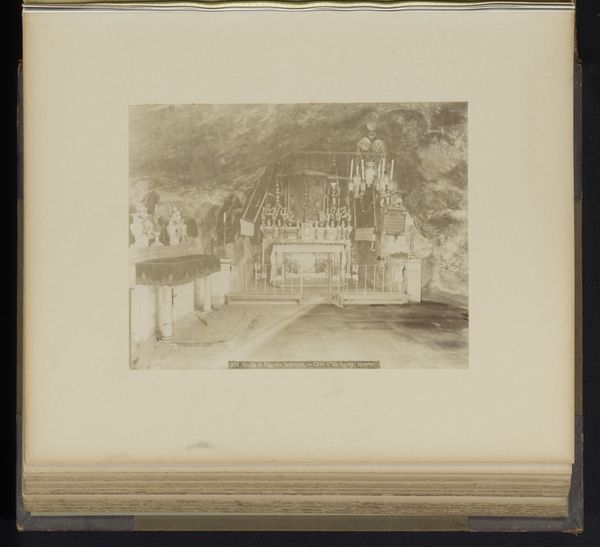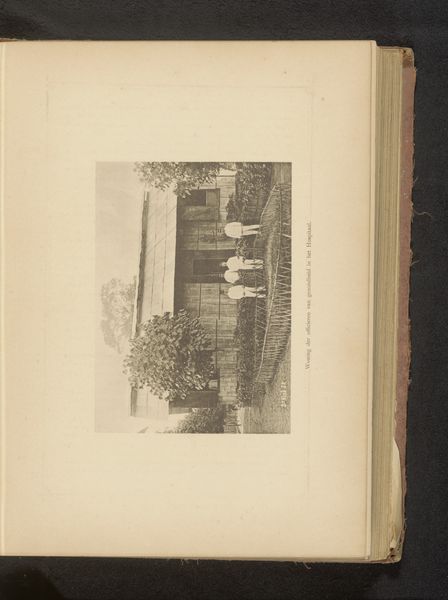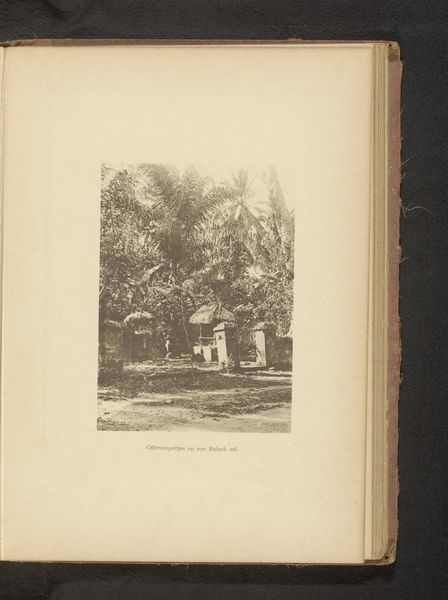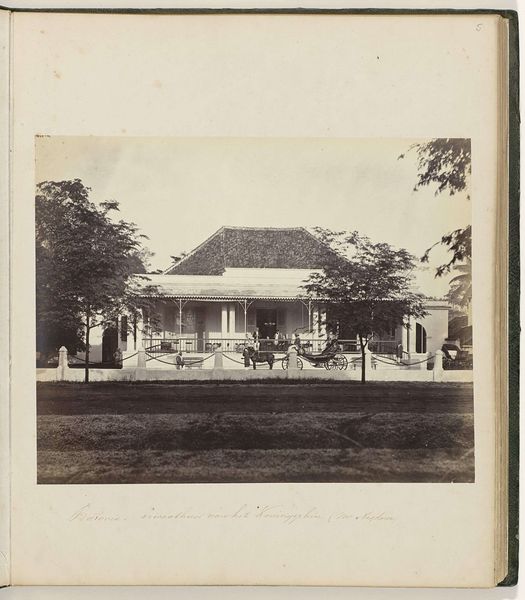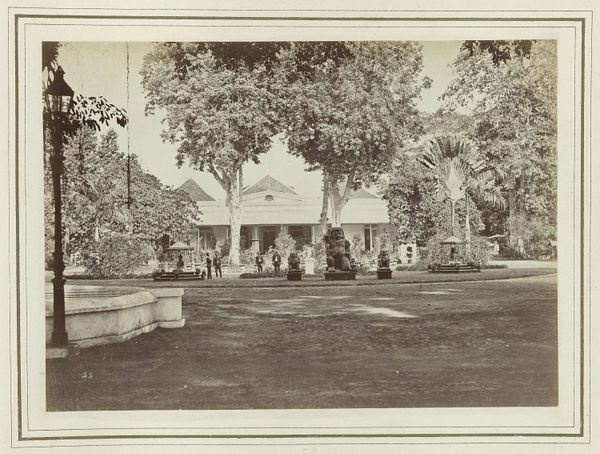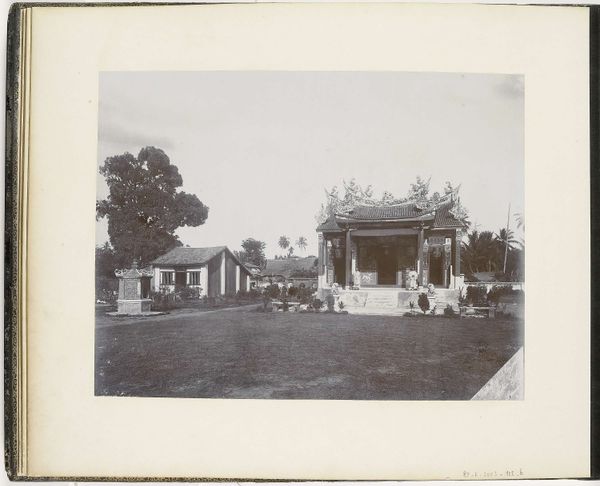
photography, site-specific, gelatin-silver-print
#
landscape
#
photography
#
orientalism
#
site-specific
#
gelatin-silver-print
Dimensions: height 210 mm, width 273 mm
Copyright: Rijks Museum: Open Domain
Curator: This gelatin silver print, created sometime between 1863 and 1866, is entitled "Batavia - Privaathuis op Kebon Serie," made by the photographic studio Woodbury & Page. It resides here at the Rijksmuseum. What's your first take? Editor: I’m immediately struck by how seemingly unremarkable it appears at first glance—a rather domestic scene, serenely composed. But, given the era, the colonial context simmers beneath the surface. Curator: Exactly. Batavia, now Jakarta, was the capital of the Dutch East Indies. Images like this, disseminated back to Europe, played a role in shaping perceptions of the colonial world and reinforcing hierarchies. Who are these people, and who is meant to be in control? Editor: You see the way the architecture is positioned - that crisp, whitewashed facade centered between foliage feels staged to create a distinct orientalist picture for Western consumption. We should question that this reflects daily lived reality there. Curator: Indeed. Look closer, though. Consider the choices made in its production and its journey. The subject is not strictly factual. Consider that these photographs were often commissioned by and catered to the tastes of the colonizers. How does that influence what's being portrayed and, more importantly, what’s left unseen? Editor: Right, this isn’t merely documentation; it's a deliberate construction of reality that privileges a particular perspective and, dare I say, contributes to an overall narrative of domination. So this house represents so much more in the colonial system. Curator: It's the "private home" in the title itself—implying a safe, familiar space while obfuscating the wider realities of colonial power dynamics and exploitation. That said, while photography does freeze time, how are our audiences consuming images of today compared to back then? Do we interpret social dynamics as being more aware now? Editor: Thinking critically about visual media remains paramount in understanding any context. Considering social and historical power, examining perspectives within photography and encouraging new research— it enriches our discussions and helps our visitors interpret and reframe the meanings behind this work.
Comments
No comments
Be the first to comment and join the conversation on the ultimate creative platform.
